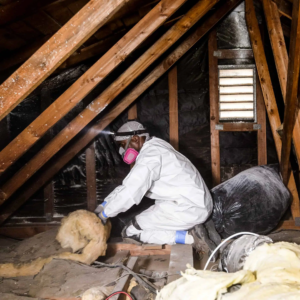A surgeon is a doctor who performs surgical procedures. They may work alone or with other medical professionals to provide patient care.
Surgeons often start their hands-on medical training through clinical rotations and internships during their final two years of medical school. They continue their education through a surgical residency typically lasting five years.

Hospitals are the core of many healthcare systems and serve as one-stop medical centers for patients with a wide range of acute and chronic health conditions. The facilities also provide educational opportunities and training for medical students, researchers, and physicians. Hospitals are generally divided into categories based on their function and the size of their patient population. These include general hospitals, academic medical centers, long-term care hospitals, and specialized hospitals.
Some patients visit a hospital for diagnosis, treatment and therapy and then leave (“outpatients”) without staying overnight; others are admitted to the hospital and stay for several days or weeks or months (inpatients). In addition to focusing on patient care, hospitals conduct research that contributes to the advancement of medicine and may improve patient outcomes. Many hospitals publish the results of their research in medical journals.
Many hospitals have an affiliation with a specific medical school or university, which enables them to offer specialized services and training opportunities for future doctors. The majority of hospitals, however, are general service hospitals that are not equipped to handle chronic or long-term care for patients. Government-supported hospitals are funded via grants and public funding and may operate with more restrictions but serve members of the community who would otherwise not receive care. Veterans hospitals are an example of this type of facility.
As the coronavirus pandemic continues, hospitals across the country are preparing for an influx of patients who need treatment for some of the most severe effects of the disease. This means that they must clear at least 30% of their beds in order to accommodate the additional patients, according to an overview published in the Annals of Internal Medicine.
With the increasing demands on hospital systems, it is critical to have an accurate view of your organization’s operational costs. This includes the ability to track ambulatory surgery center performance, monitor market trends and analyze MS-DRG coding indicators. You can also access custom data sets that enable you to perform specialized reporting and competitor analysis. This information can help you identify and target areas for cost improvement in your healthcare operation.
Outpatient Surgery Centers
Modern medicine has greatly reduced the need for hospital stays for many surgical procedures. Some of these same-day procedures can be done in a freestanding surgery center, also known as an ambulatory care facility (ASC). These facilities often specialize in certain types of surgeries, which may make them a better choice for some patients than a traditional hospital setting.
When deciding where to have your procedure, you should consult with your doctor about their preferences. Some doctors prefer to perform their surgical procedures at a hospital, while others feel more comfortable performing outpatient surgery. Regardless of your surgeon’s preference, you should always make sure the facility is accredited and licensed by the California Medical Board.
The Board’s website has an online database that you can use to find a licensed and accredited surgical setting in your area. Using this tool will ensure you’re receiving the highest quality of care possible. This database will also let you know whether a specific outpatient surgery setting has had any consumer complaints filed against it.
ASCs are usually 45-60% less expensive than hospitals, which benefits both the patient and their insurer. The savings are due to ASCs’ specialized operations, efficiency and a more stable reimbursement environment than that of hospitals. This enables ASCs to increase outpatient surgery volumes without increasing the rate at which they pay physicians for services.
Choosing an outpatient surgery setting can help you save money, reduce stress and get back to your daily routine more quickly. Because outpatient surgery centers don’t deal with emergency cases, you can generally schedule your surgery months in advance and have more control over the timing. Unlike hospitals, outpatient surgery settings don’t have the same flexibility to cancel or reschedule surgery on short notice.
Because outpatient surgery centers focus solely on surgical care, they often offer a higher level of specialization than a hospital. This means the surgeons and staff have experience in performing the same procedures you’ll need, which can lead to better outcomes and a faster recovery. You should follow your doctor’s instructions for preparing for outpatient surgery, including not eating or drinking anything for a certain number of hours before your procedure. If you’ll be under anesthesia, it’s also a good idea to bring along a friend or family member who can drive you home afterward.
Private Practices
Patients can benefit from the continuity of care that private practices provide, fostering stronger physician-patient relationships and a deeper understanding of their medical history. In addition, private practice physicians tend to have more freedom in their day-to-day operations, allowing them to better manage healthcare staff and other business aspects of the practice.
This flexibility also helps to cultivate professional growth for healthcare professionals, as many have to wear several hats at the practice. This may include acting as a physician, administrator and HR manager, all while providing patient care. This multi-tasking can help to develop leadership skills and entrepreneurial acumen.
Additionally, a private practice typically serves a more limited patient population, which can help to foster a more personalized approach to treatment. This type of patient-centered care can improve the overall experience of the patient and increase satisfaction rates. In fact, a study published in JAMA Internal Medicine found that patient satisfaction is higher for physicians working in smaller private practices than those at large hospital systems.
Another significant trend that can boost the viability of private practices is technological advancements that help to streamline administrative tasks and improve patient outcomes. For example, telemedicine allows physicians to see patients remotely without exposing them to other potentially contagious patients. And the development of artificial intelligence and machine learning can help doctors to make more accurate diagnoses.
With the healthcare landscape constantly evolving due to advancements in technology and changes in medical policy, it’s important for healthcare professionals to explore options that can best meet their career and personal goals. With greater operational flexibility, financial control, scope for professional development and work-life balance, private practices can still offer an attractive pathway toward a successful healthcare career.
Education and Training
Aspiring surgeons spend between 13-18 years meeting the requirements to practice their chosen specialty. This includes a bachelor’s degree and four years of medical school, followed by a residency program in which they train in their desired field. Surgeons then continue their education with a fellowship of 1-3 years to refine their skills in their area of expertise.
Surgeons must possess a combination of skills and knowledge, including the ability to plan surgical procedures, the capacity to critically analyze medical data, and the interpersonal and communication abilities necessary to lead the rest of a hospital’s medical staff. Surgeons must also be highly motivated individuals, with a desire to improve their profession, as they are expected to be innovative and creative in their approaches to patient care.
During medical school, many aspiring surgeons gain healthcare experience through internships and clinical rotations, which can help them gain acceptance to a residency program. Typically, residents work under the supervision of an attending surgeon to refine their skills in a variety of areas, such as general surgery and trauma. The American College of Surgeons recommends that a medical student start applying for a residency in their third year. The residency process is competitive, and successful applicants must have high scores on the medical board exam.
After graduating from medical school, many surgeons enter private practice or join an institution. Those who want to further their research may pursue a fellowship in their specialty, such as plastic surgery or cardiothoracic surgery. The Academy of Master Surgeon Educators aims to take a leadership role in advancing the science and practice of surgical education across all specialties.
The medical world is constantly evolving, and surgical training needs to keep up. Traditionally, training for surgeons was through apprenticeship, but advances in education and technology have allowed for classroom-based learning and practical training on cadavers and dummies. Continuing education is a requirement for surgeons to maintain their licenses, and the ABS offers an online certification system with resources to help surgeons stay up to date on advances in their fields.
The future is bright for surgeons, with a demand for their services and the development of new technologies that could make the job even easier. The number of surgeons per 100,000 people continues to drop, though, which could create a shortage in the future.








